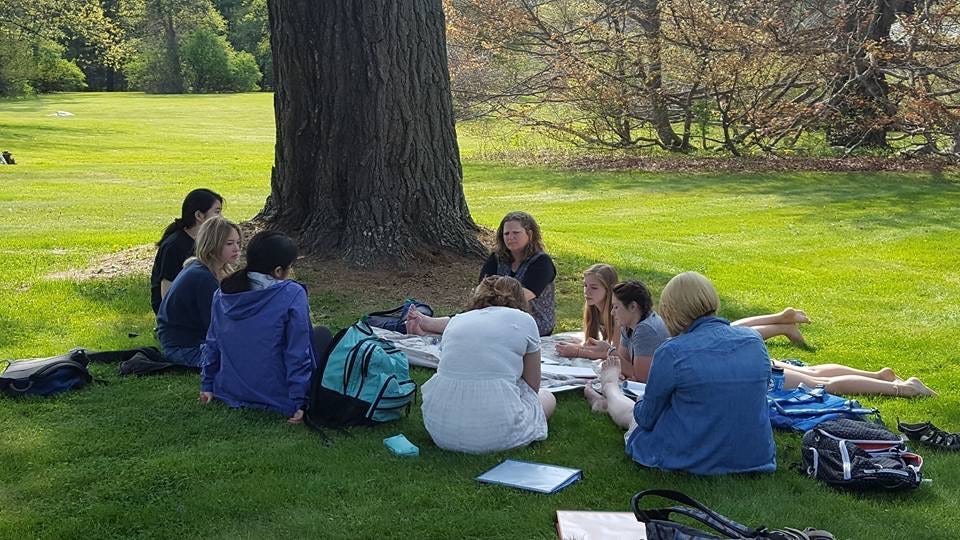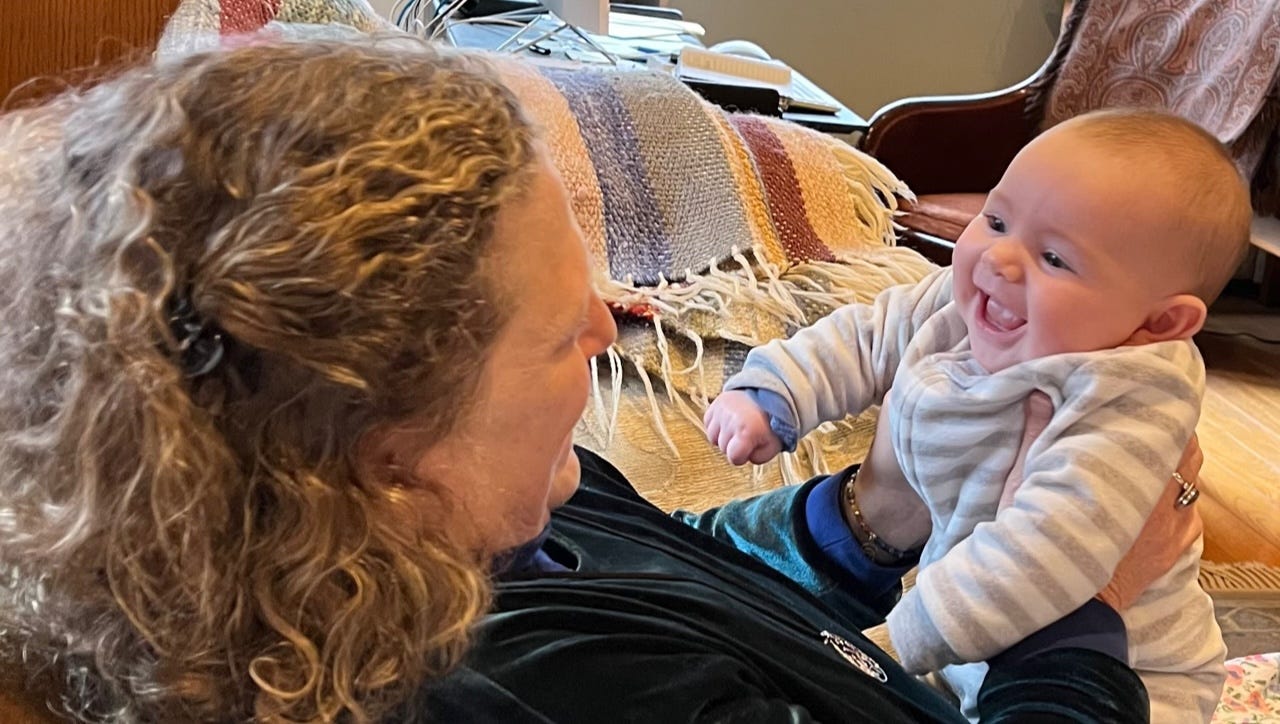A Bright Vision of Sanctuary Schools
What if instead of forcing learning through fear and competitiveness, school was a place where children’s natural curiosity was encouraged and supported, and learning felt like play?
I have been thinking about this week’s shocking news that a six-year-old, a first-grader, shot and critically wounded his teacher.
So many questions leap to mind: how did he get a loaded gun to put in his backpack? How did he know how to use it? He must have thought it was a toy gun, right? Did he play with toy guns in his home? Did he see his parents handling real guns?
Children are such incredible imitators that what they see in their early years is likely to be what they do. When my kids were young, they desperately wanted to play with toy guns. I was always resistant to buying them, other than bright orange or neon green plastic water pistols. I did not want my boys playing with any realistic-looking toy guns. Why? Partly due to my own instinctive aversion to guns—I didn’t want anything that looked like a real gun in my home. Partly because I didn’t want my children pretending to shoot each other or anything else, even with a toy weapon.
So of course they picked up sticks in the woods and did it anyway…but to me there seems to be a qualitative difference between holding a stick and pretending to shoot, and holding a realistic-looking semi-automatic rifle or chunky handgun and pulling the trigger.
It’s essential to be intentional about what children are exposed to. The challenge is to do this through love rather than fear, through positive intention for flourishing rather than through prohibitions and censorship.
Sure, I would like to see a ban on assault weapons and semi-automatic handguns among civilians. But how to enforce this? Even if the policymakers would go along with such a ban, the criminals would leap avariciously into the breach.
The weaponization of society in the US comes from fear. And fear breeds more fear, it’s a vicious cycle in which we seem to be deeply entrenched. How to break the cycle? How can education be part of the solution instead of another breeding ground for the problem?
One common dystopic vision of the future is that we descend into a modern version of feudalism and vigilante tribalism. State law and order break down, so people take matters into their own hands, creating fiefdoms ruled by those with the most power—which too often means those with the most ruthless willingness to use violence to achieve dominance, Mafia-style.
At a certain point a few years ago, I got saturated with such dystopic imaginings and stopped reading or watching them. That way lies despair and paralysis.
What we need instead are vividly imagined positive futures, in which the collapse of current harsh, unsustainable systems turns out to be a good thing in the end, leading to better social systems and greater happiness and wellbeing for all.
Schools and teachers surely can’t do it all. What happens in the home and on the street is critical, and much harder to monitor, much less control. But schools can be one place where we try to break the cycle of fear and violence, initiating young people who will go on to create a more peaceful, just, sustainable world.
Let’s face it, today’s schools are pressure-cooker factories where kids are moved around the conveyer line of fluorescently lit classes to face a constant barrage of information, punctuated by those moments of intense performance anxiety otherwise known as quizzes, tests and presentations. In this competitive atmosphere, encompassing not only intellectual performance but also looks and “likes,” kids learning to judge themselves and others by harsh and sometimes mysterious criteria. In the social media era, this combative, judgmental atmosphere bathes kids nearly 24 hours a day, it’s like the social air they breathe. And it is toxic.
What if schools were reimagined as sanctuaries? What if instead of drilling kids on academic skills and forcing learning through fear and competitiveness, school was a place where children’s natural curiosity was encouraged and supported, and learning felt more like play?
The educational philosophies of Maria Montessori and Rudolf Steiner tend in this direction; they are good models to learn from and adapt to the realities of the 21st century, and I will have more to say about both.
For now I just want to linger on this bright vision of schools as sanctuaries, where kids are encouraged to learn at their own pace, following their own interests, guided by teachers who see themselves as loving role models, rather than demanding taskmasters and disciplinarians.
This would involve reversing the 20th century trend of school centralization.
What if, instead of massing kids in huge schools where strict discipline is necessary to maintain order, we reverted to smaller schools, perhaps organized around interest and aptitude rather than neighborhood?
What if kids could move between schools, following their interests, rather than being locked into the same place-based social group year after year?
What if teachers, as role models, were also encouraged to pursue their own interests as inventors and creators, so that they too would be inspired every day to come to school to explore new ways of understanding our world and making it better, together with their learning team of students?
JB Teaching.
A key aspect of manifesting this vision would have to do with the intentional cultivation of what are now called “social-emotional learning” skills. Currently, education pays lip service to these “soft skills,” but they are considered ancillary to the main focus of force-feeding and testing academic knowledge.
Whether the 21st century leads to social collapse or to increased technological sophistication (or some combination of both), we are going to have to learn to get along better.
We must learn to recognize ourselves as individual parts of a great whole—humanity, Gaia, the cosmos—and to understand that only through working well together can we create flourishing for ourselves and our communities and the vast system of Life.
Schools as sanctuaries could provide a counter to whatever forms of home-based social-emotional learning groomed that six-year-old child to bring a loaded gun to school and shoot his teacher.
That child came into this life as pure positive potential, just like all of us do. Every child is like a precious seed, carrying inside the potential for future growth, both physical and spiritual.
In this time of rapid change and widespread social and environmental dysfunction, we need sanctuary schools that we care for like beloved gardens, providing nourishing, well-tended soil where our children—the custodians of the future—can grow into healthy, flourishing adults who will in turn create healthy, flourishing societies and systems around them.
Me and my granddaughter, seed of the future….






